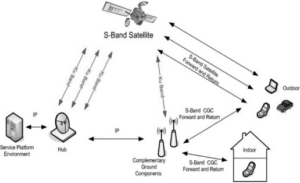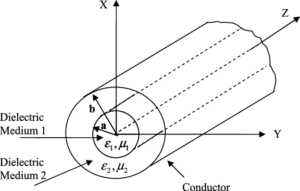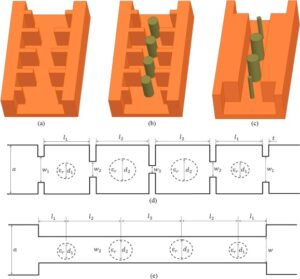Understanding Double Ridged Waveguides
Double ridged waveguides are an important development in the field of waveguide design as they provide superior characteristics to both their single-ridged and standard counterparts. This can be seen clearly when comparing their fundamental characteristics, the behavior of transverse electric modes and the critical role of ridge dimensions in wave propagation.

Fundamental Characteristics of Ridged Waveguides
There are several fundamental characteristics which inform the operation of ridged waveguides. This includes the ability to support a great number of distinct frequencies on a given structure. While a standard waveguide can operate only for frequencies below its cutoff frequency, the double ridged waveguide is able to efficiently radiate and shuttles across an interval of a few tens of GHz above and below the cutoff frequency of the equivalent standard waveguide. This is directly related to the modification of the electric and magnetic fields inside the waveguide, as the ridges account for structural modifications which in turn affect the wave impedance and are how the modes are propagated.
TE Modes
One of the transverse electric modes in typical double ridged waveguide will have much lower cutoff frequency with respect to the equivalent TE mode in the standard waveguide operating on the same frequencies . The reason behind this is the previously discussed fact that the presence of ridges directly alters the electromagnetic field distribution. The most important difference between the TE modes in a double ridged waveguide is that this mode will operate at much lower frequency on the ridged design than in a standard waveguide, thus making the double-ridged waveguide a much more efficient and broadband tool.
Ridge Dimensions
Finally, the performance of waveguides and especially their cutoff frequency, bandwidth and mode propagation are critically affected by the dimensions of ridges. Engineers can modify this aspect by altering the dimensions of the width, height and spacing of the ridges. For example, a waveguide with an increased height of the ridges will naturally have reduced cutoff frequency, which is often desirable for low-frequency radio equipment. Changes in the spacings between ridges will have an effect on the distribution of modes, affecting the impedance matching and the efficiency and operational bandwidth of the waveguide.
Advantages of Double Ridge Design
The double ridged waveguide is one of the key improvements in the field of microwave engineering, as it is accompanied by a variety of benefits vital for a significant number of applications. Moreover, this new design not only compensates for the limitations of traditional waveguides but also introduces new capacities, which attract many engineers and technicians. The discussed concept is one of the pillars of microwaves, and it would be impossible to imagine modern systems in which the double ridged waveguide was not utilized.
The impressive bandwidth
The double ridged design provides engineers and technicians with an advantage that is probably more crucial than others: the possibility to work with impressive bandwidths. Traditional waveguides operate with a bandwidth of between 10% and 15% of the center frequency. In turn, double ridged waveguides offer drastically new values, as the absolute bandwidth can be above 100% of some nominal frequency. Furthermore, it is also important that such an improvement allows for the creation of a single waveguide that can operate in numerous frequency bands. This capacity makes the double ridged waveguide particularly cost-effective, as a single device can be utilized in a broad range of applications.
Impedance match and low cutoff frequency
The double ridged waveguide is also valuable because the dimensions of the ridges, and sometimes the wall thickness, can be easily modified to achieve an effective impedance match. By reducing the necessity for matching devices, one can enhance the performance and reduce costs. In particular, the described ability also leads to the possibility to work with low cutoff frequencies: for example, a waveguide measuring 3 by 10 inches can operate with in-band efficiency even at 30% of its nominal cutoff frequency. This capacity is particularly valuable because waveguides could not work effectively at such low frequencies even with the use of solutions that are currently applied for impedance matching.
Technical Specifications and Variants
Design and fabrication of waveguides, including double ridged waveguides, are complex processes as they require the adherence of multiple specifications aimed to improve the performance of this equipment. Double ridged waveguides are broadly used for their broadbandedness, and their features vary from one model to another, and knowledge of these specifications, including size, choice of material, and flange type is necessary to select these waveguides for a specified RF equipment.

General Specifications of Double Ridge Waveguides
The most beneficial feature of such equipment is the broad frequency band provided, with a normal frequency range being between some hundred of megahertz and over 18 GHz. The reason for such exclusive bandwidth performance is related to the waveguide’s design that comprises two ridges produced from the widest waveguide’s wall and terminating in the center of the waveguide. Due to this unique design, this type of waveguide demonstrates the lowest operating frequency while operation at the same time, and with its standard design impedance at about 50 Ohms double ridged waveguides are convenient to be connected to the majority of RF equipment .
Another essential specification is the Voltage Standing Wave Ratio (VSWR), which remains less than 1.5:1 in a wide frequency band, providing a minimal amount of power losses and reflection. This waveguide’s feature also requires the availability of the specified geometry dependent on the waveguide’s designed frequency.
Specific Size and Waveguide
Different waveguides are designed for different frequency ranges , which also dictates the differing waveguide dimensions creating a prerequisite to selecting appropriate dimensions for target frequencies and selecting alternatives for a different frequency. Thus, for example, one of the dimension variants includes 15.8 x 7.9 mm dimensions and is designed for the 18-40 GHz frequency range, while another specification variant includes 39.6 x 19.8 mm dimension and is optimal for the 6-18 Ghz frequency range.
Waveguide and Materials Used and Flange Types
The materials used and the type of flanges selected also varies, with the essential material being, for example, aluminum or brass for the waveguide and UG, CMR, or CPR types of flanges. These are crucial processes that affect waveguide performance and requires individual setup depending on the specifications.
Practical Applications and Limitations
Double ridged waveguides are widely used in the context of microwave engineering, with the devices justifying their relevance in numerous applications requiring high power and a wide bandwidth. Nonetheless, understanding their use in practice, as well as trade-offs and their comparison with standard waveguides, is also of key importance for maximizing their effect.
https://dolphmicrowave.com//dolphmicrowave.com//www.youtube.com/watch?v=r9-m17IPOco
Use in High-Power and Wide-Bandwidth Scenarios
The most logical application of double ridged waveguides is conditionalized by the type of technology is related to scenarios that make it necessary to handle significant power and have a broad bandwidth. Due to their design, the waveguides are also highly efficient in reducing the effect of heat on operation, as well as preserving the integrity of signals across a wide range of frequencies. As such, reasonable scenarios for the use of such technology are radar systems, satellite communications, and broadband RF amplifiers. In the context of radars, double ridged waveguides can transmit high-energy pulses across long distances with minimal loss of power and signal quality.
Another convenient application of double ridged waveguides, conditioned by the large bandwidth, is the ability to support significantly different frequencies . In this regard, they are widely used in the context of electronic warfare, where different frequencies have to be accounted for, and their signal source is identified as test equipment.
Trade-offs: Loss vs. Power Handling
While the use of double ridged waveguides is justified for high-power and broad-band scenarios, trade-offs are also present in the given context. Indeed, the design leading to the current broad-band characteristics also complicates the emergence of more straightforward resonance waves, which can be identified in standard waveguides. As a result, the trade-off in question is balanced with the frequency range under consideration, particularly with the insertion loss. While, in the case of using a double ridged waveguide, the interested party can expect several kilowatts of power to be successfully transmitted, the loss per meter in this regard will be 0.1 – 0.2 dB, depending on the exact frequency . It implies that the trade-off in the given aspect also has to be considered in the system’s design, particularly when the integrity of the signal is a top priority.
Comparing Double Ridge and Standard Waveguides in RF Devices
The main comparison point of double ridge and standard waveguides in RF devices is possible via the extent of flexibility and effectivity of operation under the given conditions. While the narrowband standard waveguides guarantee the smaller loss per meter, as well as the simplicity of their design, double ridge waveguides, in turn, justify their use due to their frequency range and power capabilities.







